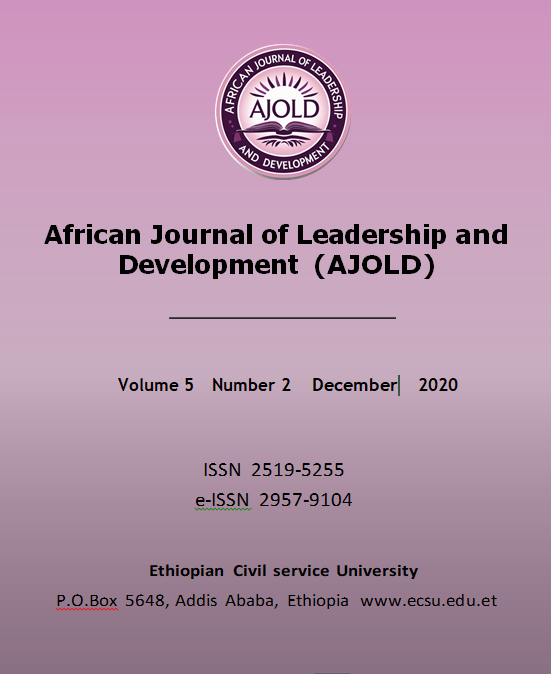Public Sector Reform for Dynamic Governance: Evidence from Selected Regional bureaus of Oromia Regional State, Ethiopia
DOI:
https://doi.org/10.63990/2020ajoldvol5iss2pp15-31Keywords:
Dynamic Governance, Neo-Weberian model, New Public Management, Reform, OromiaAbstract
The general objective of this study was to assess the role of the public sector reform programs in creating dynamic governance in bureau-level sectors of Oromia Regional State. In this survey study, sectors at the regional administration-level were selected using purposive sampling technique. About 170 civil servants and middle level public managers were selected from the sectors using simple random sampling technique. The analysis of the study was descriptive that combined both qualitative and quantitative data. The study shows a clear dominance of roles that are in line both with a Weberian self-understanding and a managerial (NPM) self-understanding indicating a certain hybridization of these two reform paradigms called Neo-Weberian model. The study identified that public managers and civil servants in the region perceive low level of autonomy (except in policy implementation) in power of promoting, hiring and firing of employees, restructuring organization, and developing and selecting policy options. This study also indicated poor implementation of the managerial reform programs in the regional state. Considering the human resource capacities of civil service organizations of the regional state, public sector reforms can bring incremental benefit and evolutionary transformation instead of dramatic and radical change for foreseeable future to come, in which it will be difficult to expect the dynamic governance to be a reality. Finally this paper recommends due attention for the implementation of Balanced Scorecard in the public sectors.
Downloads
Published
How to Cite
Issue
Section
License
This work is licensed under a Creative Commons Attribution-NonCommercial 4.0 International License






